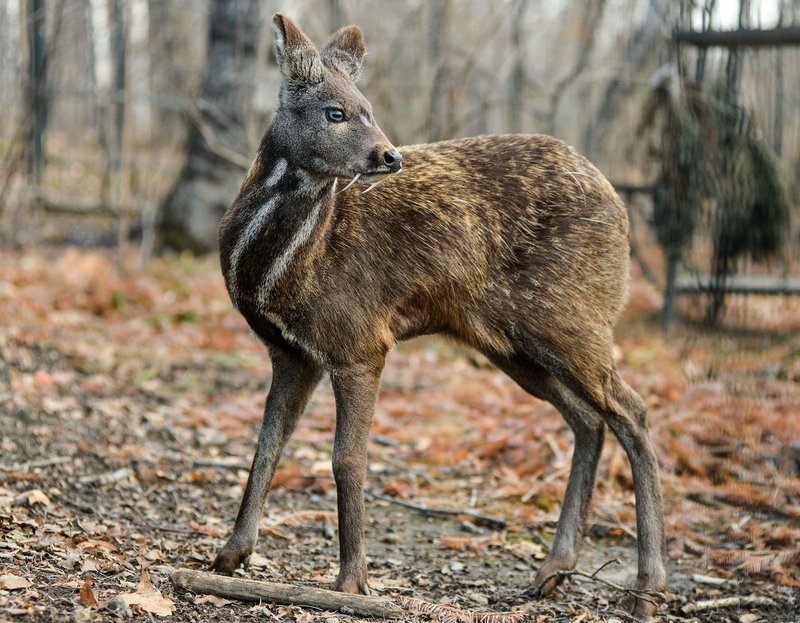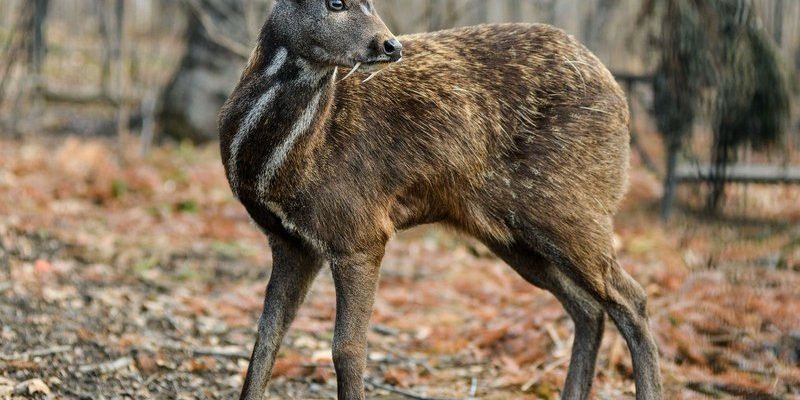
Musk deer, native to the mountainous regions of Asia, have evolved some incredible adaptations to cope with their harsh habitats. These areas are often characterized by cold temperatures, thick forests, and challenging terrain. Just like a cozy sweater protects you from the chill, musk deer have their own special features that keep them warm and healthy. In this article, we’ll explore the various ways musk deer manage to survive in these tough environments, and you’ll see just how remarkable these creatures really are.
Unique Physical Adaptations
Musk deer are designed for survival. One of their most important adaptations is their thick coat. This isn’t just about style; it helps insulate them against freezing temperatures. Imagine bundling up in a heavy jacket during winter—that’s what musk deer do with their fur. This coat traps warm air close to their bodies, allowing them to maintain their body heat even in the coldest conditions.
In addition to their fur, musk deer have long, slender legs that allow them to navigate steep and rocky terrains effortlessly. These adaptations are crucial for jumping and climbing, making it easier for them to find food and evade predators. Just think about how mountain goats can climb high cliffs; musk deer have similar skills, but they manage this in their own special way.
Another fascinating feature of musk deer is their smaller body size compared to other deer species. This might seem like a disadvantage at first glance, but it actually helps them conserve energy. Less body mass means they require fewer calories, which can be a lifesaver when food is scarce. Their unique body structure is a clever adaptation to their challenging environment.
Dietary Flexibility
Here’s the thing: musk deer are not picky eaters. They have a highly adaptable diet, which is essential for survival in their harsh habitats. In the wild, they primarily feast on a mix of leaves, herbs, fruits, and even bark. This variety is crucial because it allows them to find food year-round, even when certain plants are out of season.
In the winter months, when food becomes scarce, musk deer rely on whatever is available. You might be wondering how they manage to find enough to eat in the snow-covered landscape. They’ve developed a knack for digging through the snow to reach hidden vegetation. This resourcefulness shows just how well they can adapt to their environment.
Moreover, musk deer can also switch their diet based on the season. During warmer months, they’ll munch on lush green plants, while in colder times, they may focus on tougher, fibrous materials. This flexibility is a key factor that allows them to thrive where many other animals might struggle.
Effective Camouflage
Have you ever played hide-and-seek with a friend, trying to find the perfect hiding spot? Musk deer are masters at blending into their surroundings. Their fur is usually a mix of brown and gray, which helps them stay unnoticed in the dense forests where they live. This natural camouflage is vital for avoiding predators, as they rely heavily on stealth to stay safe.
When they sense danger, musk deer can freeze in place, relying on their excellent camouflage to avoid detection. They can remain completely still, making them look like just another tree stump or pile of leaves. It’s a clever trick that allows them to escape attention without having to run away, which can sometimes draw more attention.
In addition to their color, the musk deer’s habit of staying close to dense vegetation provides an extra layer of protection. They often use thicker underbrush to hide, which makes it even harder for predators to spot them. This instinctual behavior reinforces their chances of surviving in a challenging environment.
Social Behavior and Communication
Musk deer are generally solitary creatures, but they do have their own unique social behaviors. During the mating season, males will engage in vocalizations to attract females. While they’re not as vocal as some other deer species, these sounds are crucial for communication. It’s like sending out a personal invitation to potential mates, all while maintaining a low profile from predators.
In addition to their mating calls, musk deer use scent marking as a way to communicate their presence to others. They have specialized glands that produce a musky scent, which serves as a sort of “hey, I’m here” message. This signals to other musk deer in the area about their territory or readiness to mate.
Interestingly, even though musk deer are mostly solitary, they will sometimes gather in small groups during the winter months. This social behavior helps them find food and stay safer from predators. Think of it as a cozy winter gathering, similar to friends huddling together for warmth on a cold day.
Strategies for Coping with Cold Weather
When winter rolls around, musk deer face some of their toughest challenges. To cope with the cold, they exhibit several interesting behaviors. For starters, they often stay active during the day when the sun is out. This helps them take advantage of any available warmth and enhances their chances of finding food.
However, when nighttime falls, they seek shelter in thick brush or under overhanging rocks. These hiding spots provide protection from the biting wind and falling snow. It’s a bit like finding a cozy nook at home where you can curl up and forget about the world outside.
Additionally, musk deer are known to lower their activity levels during the coldest months. They conserve energy by doing less, much like how we might cozy up on the couch during a snowstorm instead of going out. This strategy is essential for their survival as it allows them to maintain their energy reserves until conditions improve.
Threats and Conservation Efforts
Despite their remarkable adaptations, musk deer face significant threats due to habitat loss and hunting. As humans expand into their habitats, these quiet creatures are losing the safe spaces they need to thrive. Deforestation and urban development can destroy the dense forests that are their homes, making it harder for them to find food and shelter.
Hunting for their prized musk gland, used in traditional medicine and perfumes, also puts musk deer in danger. This demand has led to a decline in their populations. It’s a tough reality that highlights the challenges these beautiful animals face, even with their impressive survival skills.
Fortunately, conservation efforts are underway to protect musk deer and their habitats. Organizations are working to create protected areas and promote sustainable practices that help preserve the natural environment. By raising awareness and supporting these initiatives, we can contribute to the survival of these remarkable creatures.
In conclusion, musk deer are fascinating animals with incredible survival tactics that allow them to thrive in harsh environments. From their unique physical adaptations to their flexible diets and clever camouflage, they truly embody resilience. While they face numerous challenges, every effort to support their survival brings us one step closer to ensuring that these remarkable creatures will continue to grace our forests for generations to come.

